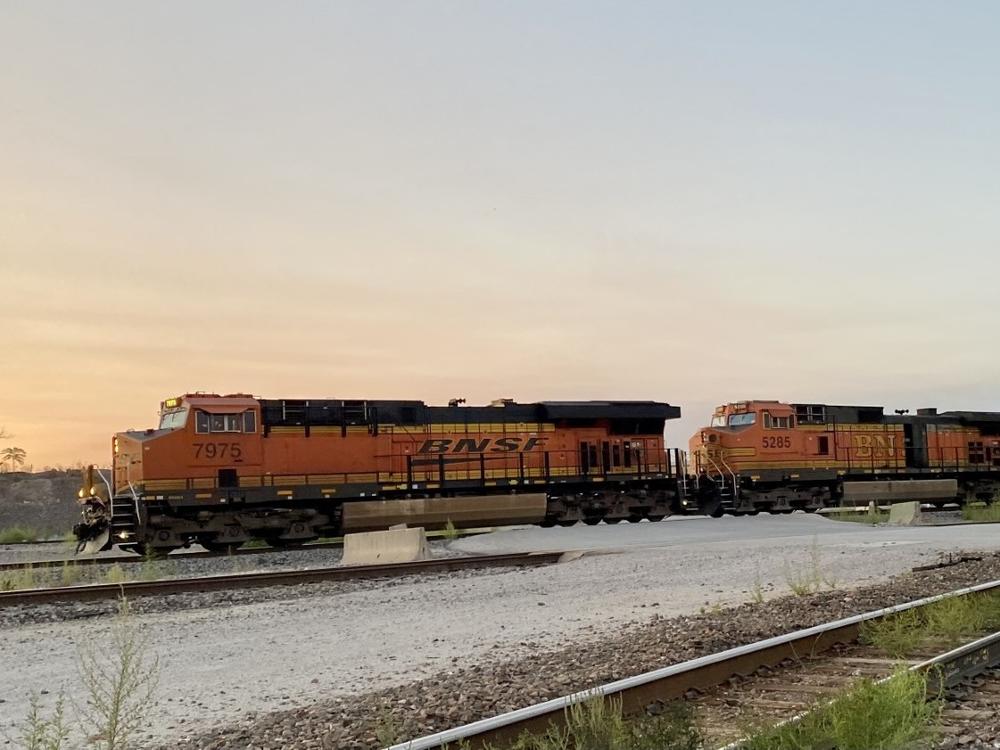Section Branding
Header Content
How a freight train strike could throw your plans to travel by train off track
Primary Content
CHICAGO — The United States may be hurtling toward a freight rail strike, one that could spill over into passenger service in much of the country. Railroads are cutting shipments; Amtrak has stopped some passenger routes. The sticking point isn't pay. It's the tough lifestyle that railroading imposes on people who drive trains — long shifts, lots of nights away, and the need to be on-call, able to get to work in two hours or less, for weeks on end.
On a normal day, about 7,000 freight trains crisscross the U.S, according to the Association of American Railroads, hauling most of the stuff that makes the economy work. But this whole system could shut down later this week because the people who drive these trains for a living are so angry, according to Dennis Pierce, who's president of the engineers union, Brotherhood of Locomotive Engineers and Trainmen.
"I have never seen this level of anger," Pierce says. "Animosity. Acrimony. You pick the word," he says. "That means they're pissed off, 'cause they are." He says even though freight train engineers and conductors haven't had a raise in three years, that's not the issue. "They do not have days off. They do not have a schedule." They're on call, Pierce says, for weeks on end.
Engineers and conductors want more predictable, and flexible, schedules
Railroad engineers and conductors are paid well, typically about $100,000 a year. Even so, former engineer Millie Hood — who drove trains 38 years for Burlington Northern Santa Fe — says the occupation is brutal. "Yeah, it sucks the life right out of you," Hood says. "You're constantly thinking about the job. When I got off work, I'd go home and go to sleep and I immediately know when I get up that they could call me to go to work."
Engineers and conductors want more predictable, and flexible, schedules. Two unions representing engineers and conductors have been bargaining with the railroads, along with 10 other unions representing other railroad workers, for close to three years.
The upshot of all that talking is a compromise hammered out this summer by a Presidential Emergency Board appointed by President Biden. It would offer rail workers the biggest pay hike in decades, boosting railroad wages 24% by 2024. But it doesn't get at the work schedule issues, and Pierce says the railroads can do better.
"Union Pacific reported its best year ever last year," Pierce says. "And that's like 160 years' worth of best years, billions of dollars in profits. They can afford everything their employees are asking for. ... Like hiring enough employees to cover for employees' absences when engineers or conductors need time off on short notice."
Still, all the other railroad unions have tentatively signed off on the proposal currently on the table. The engineers and conductors are holding out and they could trigger a strike Friday morning.
A railroad strike could mean "people are not going to be able to make it home"
That would cause immediate problems for manufacturers, says Lee Sanders with the American Bakers Association. This is nationwide. And a broad range of manufacturers who get parts, packaging and raw material delivered by rail would be affected.
"If we don't get the ingredients that we need to our plants, we won't be able to make the products that we need to get our wholesome products to the consumers," Sanders says.
So, empty shelves are a possibility. And farmers are worried about shipping grain. Dangerous chemicals have already stopped moving. Especially valuable goods are next, and passengers are getting stranded, too.
Amtrak is already shutting down some of its long-distance routes, like the Southwest Chief, from Chicago to Los Angeles, the Silver Star, from New York to Miami, and the Empire Builder, from Chicago to Portland and Seattle. That's because, outside of the Northeast, most Amtrak trains use tracks that are owned and operated by the big freight railroads. So, if there's a strike, those trains can't run.
At Union Station in Kansas City, Tia Henderson and her baby daughter waited Tuesday for their regular train to St. Louis.
"People need to travel back and forth. People that don't have as much finances, that don't have a car," Henderson says. "So I feel like them stopping that'll be a horrible thing to do because people are not going to be able to make it home."
A railroad strike could cost billions of dollars and derail lots of travel plans. It's a political nightmare for the party in power. The Biden administration is leaning on the railroads and holdout unions to come to an agreement.
If they don't, and there's a strike or a lockout, Congress will likely move to force the two sides to accept a deal and go back to work.
Copyright 2022 KCUR 89.3. To see more, visit KCUR 89.3.


